Disclaimer: This post contains affiliate links. This means I may earn a commission should you choose to sign up for a program or make a purchase using my link.
Psychological horror is a powerful and sophisticated subgenre that delves into the darkest corners of the human mind, exploring fear and terror not through external monsters or supernatural forces, but by manipulating the reader’s perception, emotions, and psychological boundaries. It plays on the fears that lie within us. The fear of losing control, the fear of our own thoughts, and the fear of the unknown lurking in our minds. Unlike other forms of horror, psychological horror creeps under the skin, unsettles the psyche, and lingers long after the last page is turned.
Creating effective psychological horror requires more than just eerie settings and frightening scenarios; it demands a deep understanding of human psychology, skillful use of literary techniques, and a masterful ability to blur the line between reality and madness. In this blog post, we will explore how to write psychological horror that manipulates the mind, engaging readers on a deeper, more disturbing level.
Disclaimer: This post contains affiliate links. This means I may earn a commission should you choose to sign up for a program or make a purchase using my link.
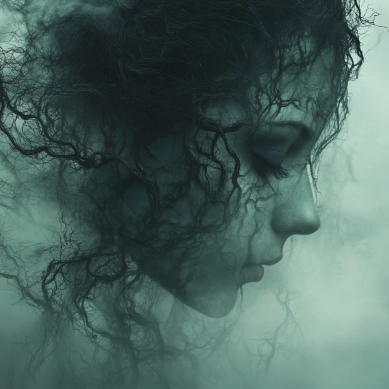
1. Understanding the Core Elements of Psychological Horror
Before diving into the intricacies of writing psychological horror, it’s important to understand what makes this subgenre distinct. Psychological horror focuses on the internal rather than the external, using characters’ minds as both the setting and the source of fear.
Key Elements of Psychological Horror:
- Unreliable Narrators: These characters, whether due to mental illness, trauma, or other reasons, cannot be fully trusted to relay the truth. This creates a sense of disorientation and uncertainty in the reader, making them question what is real and what is not.
- Isolation and Alienation: Characters in psychological horror often feel isolated or disconnected from others, either physically or emotionally. This isolation amplifies their fears and can lead to a descent into madness.
- Internal Conflicts: The horror often stems from the characters’ own minds, such as their fears, guilt, or suppressed desires. These internal struggles are as much a threat as any external monster.
- Ambiguity and the Unknown: Psychological horror thrives on ambiguity. By keeping key aspects of the story or the characters’ experiences vague or unresolved, you allow the reader’s imagination to fill in the blanks, often creating something far more terrifying than anything you could describe.
- Themes of Madness and Paranoia: The fear of losing one’s mind, or the inability to distinguish between reality and illusion, is a central theme. Characters may experience hallucinations, delusions, or intense paranoia that blurs the line between reality and nightmare.
By integrating these elements into your story, you can create a narrative that is unsettling on a psychological level, making readers question their own perceptions and emotions.
2. Crafting Complex, Unreliable Narrators
The unreliable narrator is a hallmark of psychological horror, as their skewed perspective can manipulate the reader’s understanding of events and characters. Crafting a compelling unreliable narrator requires careful planning and subtlety.
Tips for Creating Unreliable Narrators:
1. Establish a Credible Voice:
Your narrator needs to be believable, at least initially. They should have a clear, distinctive voice that draws readers in and makes them want to trust or understand them, even as hints of their unreliability begin to surface.
- First-Person Perspective: This point of view can be especially effective in psychological horror because it limits the reader’s perspective to what the narrator experiences. Their subjective view can distort reality, making readers question what they know.
- Justify Their Unreliability: There should be a reason for the narrator’s unreliability, whether it is mental illness, trauma, substance abuse, or something more ambiguous. Make this reason a core part of their character and backstory.
2. Use Subtle Inconsistencies:
Plant subtle clues that hint at the narrator’s unreliability. These inconsistencies should be small enough to pass unnoticed initially but become significant upon reflection.
- Contradictory Information: The narrator might provide details that don’t quite add up, or their description of events might change slightly. These discrepancies can be revealed through other characters, flashbacks, or even within the narrator’s own account.
- Gaps in Memory or Awareness: The narrator might have gaps in their memory, such as lost time or hazy recollections of key events. This not only raises questions for the reader but can also build suspense as the narrator tries to piece together what happened.
3. Play with Reader Expectations:
Readers often expect narrators to be truthful, so use this to your advantage. Slowly reveal the cracks in the narrator’s account, leading readers to question their initial trust.
Shifting Sympathies: Make readers empathize with the narrator initially, then challenge that empathy by revealing darker aspects of their character or past. This creates a complex emotional response, making the horror more impactful.
Twists and Revelations: Reveal a twist that forces readers to reassess everything they thought they knew. Perhaps the narrator has been hiding something crucial, or their perception of reality is fundamentally flawed.
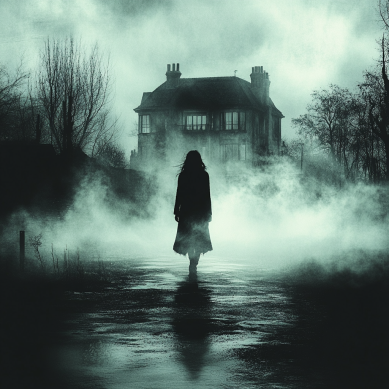
3. Creating an Atmosphere of Uncertainty and Dread
Psychological horror thrives on an atmosphere that is charged with tension, uncertainty, and a pervasive sense of dread. This atmosphere sets the tone and keeps readers on edge, constantly questioning what is real and what is imagined.
Techniques for Building an Atmosphere of Psychological Horror:
1. Use Setting as a Reflection of the Mind:
The setting in psychological horror often mirrors the characters’ mental states. A decaying house, an abandoned asylum, or a claustrophobic apartment can all serve as physical manifestations of psychological decay, confinement, or instability.
- Environmental Details: Describe the setting in a way that evokes unease. Use decaying architecture, eerie silence, or unsettling sounds to create a sense of foreboding. The setting should feel like an extension of the characters’ inner turmoil.
- Shifts in Perception: As the character’s mental state deteriorates, let the setting shift subtly as well. Rooms might change shape, familiar places become disorienting, or objects appear and disappear. This creates a dreamlike or nightmarish quality.
2. Manipulate Time and Space:
Playing with time and spatial perception can disorient readers and characters alike, creating a sense of unreality and unease.
- Nonlinear Narratives: Use flashbacks, time loops, or fragmented narratives to create a disjointed sense of time. This can reflect the narrator’s fractured mental state and keep readers uncertain about the sequence of events.
- Spatial Distortion: Characters might find themselves lost in familiar spaces, rooms might not lead where they should, or distances seem to stretch and compress. This distortion of space can heighten the sense of disorientation and claustrophobia.
3. Build Slow-Burning Tension:
Psychological horror often employs a slow, deliberate pace to build tension. The fear is not immediate; it creeps in, escalating as the story progresses.
Foreshadowing: Drop subtle hints and symbols that suggest something is wrong. These can be minor at first, like a recurring phrase, a shadowy figure in the background, or a feeling of being watched. As the story progresses, these elements should become more pronounced and threatening.
Pacing: Use a gradual buildup to create a sense of unease that intensifies over time. Introduce small, unsettling details that accumulate until they reach a breaking point.
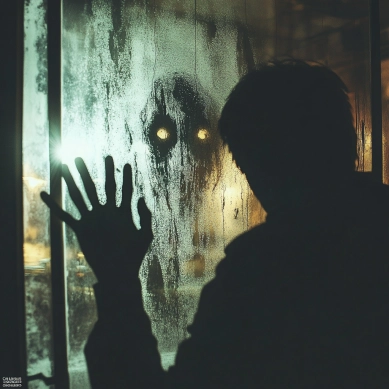
4. Exploring Themes of Madness and Paranoia
Madness and paranoia are central themes in psychological horror, as they tap into our deepest fears of losing control over our own minds. These themes can be explored through character development, plot structure, and symbolism.
Ways to Explore Madness and Paranoia in Psychological Horror:
1. Blurring the Line Between Reality and Delusion:
The horror in psychological stories often comes from the uncertainty of what is real and what is imagined. This ambiguity can make even ordinary situations terrifying.
- Hallucinations and Delusions: Characters might experience vivid hallucinations or delusions that seem real to them. These could be visual, auditory, or even tactile. The reader should be left wondering whether these experiences are real or a product of the character’s mind.
- Contradictory Realities: Present conflicting accounts of reality. Different characters might perceive events differently, or the same event might be described in multiple ways. This creates a fractured sense of reality that is unsettling and confusing.
2. Amplify Paranoia:
Paranoia can make even mundane situations feel threatening. A character who suspects everyone is out to get them or that they are being constantly watched can generate a sense of pervasive fear.
- Trust Issues: Characters should be unable to trust those around them, and perhaps even themselves. Their paranoia might be justified, or it might be a symptom of their deteriorating mental state. Keep the reader guessing.
- Unseen Threats: The fear of being watched, followed, or controlled by an unseen force can create an intense sense of paranoia. This threat does not need to be real to be terrifying; the character’s belief in it is enough.
3. Use Symbolism and Metaphors:
Psychological horror often uses symbolism and metaphor to represent the characters’ mental states or thematic concerns. These can be objects, settings, or even other characters.
Metaphorical Environments: The setting itself can be a metaphor for the mind. A labyrinthine house might represent the complexity of the character’s thoughts, while a crumbling building could symbolize their mental decline.
Symbolic Objects: Items like a broken mirror, a locked door, or a recurring animal can represent deeper fears or aspects of the character’s psyche. These symbols can recur throughout the story, gaining more significance each time they appear.
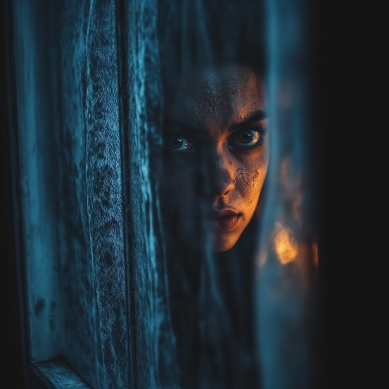
5. Crafting a Compelling, Unsettling Plot
A psychological horror plot should be more than just a series of disturbing events. It needs to be a tightly woven narrative that manipulates the reader’s expectations, explores deep psychological themes, and keeps the audience engaged through a constant sense of unease.
Tips for Creating a Psychological Horror Plot:
1. Start with an Intriguing Hook:
Your story should grab readers’ attention from the very beginning, drawing them into a world that is slightly off-kilter and compellingly mysterious.
- Introduce a Central Mystery: Present a puzzling or disturbing situation that needs to be resolved. This could be an unexplained death, a series of strange occurrences, or a character’s growing sense that something is very wrong.
- Establish Tone and Mood: Use the opening scenes to establish the atmosphere and psychological tone of the story. Set up the central theme of instability or unreliability early on.
2. Build to a Psychological Climax:
The climax of a psychological horror story should be both a revelation and a turning point, where the character’s mental state and the reality they perceive come to a head.
- Unraveling the Mind: As the story progresses, the character’s grasp on reality should weaken. They might uncover hidden truths about themselves or their environment that challenge their sanity.
- Emotional and Psychological Stakes: The climax should involve a deep personal or psychological revelation. This could be a shocking realization about their own past, a betrayal by someone they trusted, or the confirmation of their worst fears.
3. End with an Ambiguous or Unsettling Conclusion:
A neat, tidy ending is rarely effective in psychological horror. Leave some questions unanswered, some fears unresolved. The ambiguity will linger in the reader’s mind, haunting them long after they have finished the story.
- Open-Ended Resolutions: Suggest that the horror might not be truly over, or that the character’s ordeal has fundamentally changed them in a disturbing way. This could be a final, ambiguous image or a cryptic statement that casts doubt on everything the reader thought they understood.
- Emotional Impact: The ending should resonate emotionally, leaving readers with a feeling of unease or disquiet. It should make them reflect on the story and their own perceptions, creating a lasting impression.
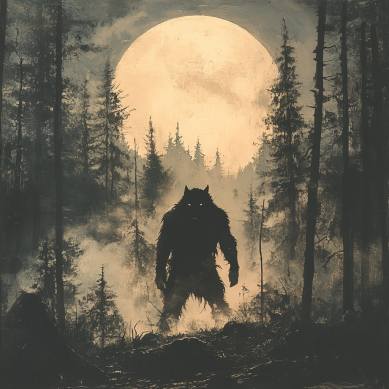
6. Using Literary Techniques to Enhance Psychological Horror
Psychological horror is as much about how the story is told as it is about the story itself. Using specific literary techniques can enhance the unsettling atmosphere and deepen the psychological impact of the narrative.
Techniques to Amplify Psychological Horror:
1. Stream of Consciousness:
This technique involves writing in a way that mimics the flow of thoughts and feelings within a character’s mind. It can be fragmented, disjointed, and nonlinear, reflecting the character’s unstable mental state.
- Internal Monologue: Use internal monologues to reveal the character’s fears, doubts, and obsessions. This can be particularly effective in first-person narratives, where the reader is immersed in the character’s subjective experience.
- Fragmentation: Break up sentences or thoughts to convey a sense of confusion or panic. Incomplete thoughts, abrupt shifts in focus, or sudden memories can all create a disorienting effect.
2. Unreliable Point of View:
Manipulate the narrative perspective to create confusion and uncertainty. An unreliable point of view can make readers question the validity of everything they are being told.
- Shifting Perspectives: Occasionally switch to different points of view to provide contrasting accounts of events. This can highlight the unreliability of the main narrator or create a sense of collective paranoia.
- Deliberate Omissions: Have the narrator omit certain details or events, only to reveal them later in a different context. This creates suspense and makes readers question what else they might not know.
3. Symbolism and Imagery:
Symbolism and vivid imagery can evoke deeper meanings and emotions, creating a richer, more immersive experience.
- Recurring Motifs: Use recurring symbols or images to represent key themes or psychological states. These could be visual motifs, like shadows or mirrors, or thematic motifs, like guilt or obsession.
- Sensory Imagery: Use all five senses to create a vivid, immersive experience. Describe not just what characters see, but what they hear, smell, taste, and feel. Sensory details can make the horror more immediate and visceral.
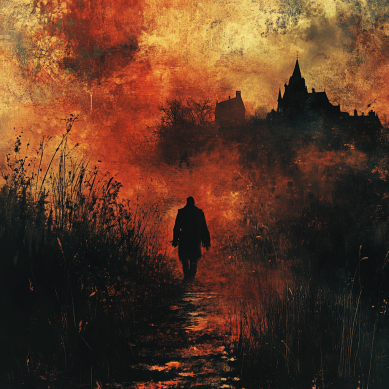
7. Avoiding Common Pitfalls in Psychological Horror
While psychological horror can be one of the most rewarding genres to write, it is also one of the most challenging. It is easy to fall into certain traps that can undermine the effectiveness of your story.
Common Mistakes and How to Avoid Them:
1. Overly Complex Plotting:
It can be tempting to create a labyrinthine plot full of twists and turns, but if the narrative becomes too convoluted, it can confuse readers more than it unsettles them.
- Keep It Coherent: While ambiguity and complexity are essential to psychological horror, make sure the core narrative is clear enough for readers to follow. If they are too confused, they will disengage from the story.
- Focus on Emotional Logic: Even if the plot is complex, the characters’ emotional journeys should be clear and relatable. Their actions should make sense within the context of their fears and motivations.
2. Overusing Horror Tropes:
Clichés like haunted houses, creepy children, or unexplained noises can quickly become predictable if not used carefully.
- Subvert Expectations: If you use familiar tropes, find ways to subvert them. For example, a haunted house might be revealed to be a projection of the character’s mind, or the creepy child might turn out to be the protagonist’s younger self.
- Focus on Originality: Create unique scenarios, settings, or fears that reflect your story’s specific themes and characters. Draw on personal experiences or less common fears to craft a more original narrative.
3. Excessive Ambiguity:
While ambiguity is crucial to psychological horror, too much of it can be frustrating. Readers need some solid ground to stand on, even if it is just to pull it out from under them later.
- Balance Ambiguity with Clarity: Provide enough concrete details to keep readers engaged and invested, then use ambiguity to enhance the horror. The key is to create uncertainty, not confusion.
- Answer Some Questions: Leave some mysteries unresolved, but provide answers to others. This balance keeps readers satisfied while still leaving them with a lingering sense of unease.
Conclusion: Mastering the Art of Psychological Horror
Writing psychological horror is a delicate balancing act that requires a deep understanding of the human psyche, a skillful use of narrative techniques, and a willingness to explore the darker aspects of the mind. By manipulating reality, crafting complex characters, and building an atmosphere of dread and uncertainty, you can create stories that not only scare but also haunt and resonate with readers on a profound level.
Remember, the most effective psychological horror is not about what lurks in the shadows, but about the shadows within us—the fears, doubts, and desires that we struggle to comprehend. By delving into these depths, you can create horror that is not only terrifying but also profoundly human.
Now it is your turn! Start crafting your psychological horror story and let your imagination run wild. Share your thoughts, experiences, or ideas in the comments below. I would love to see them. As always, Happy Writing!

Newsletter Sign-Up